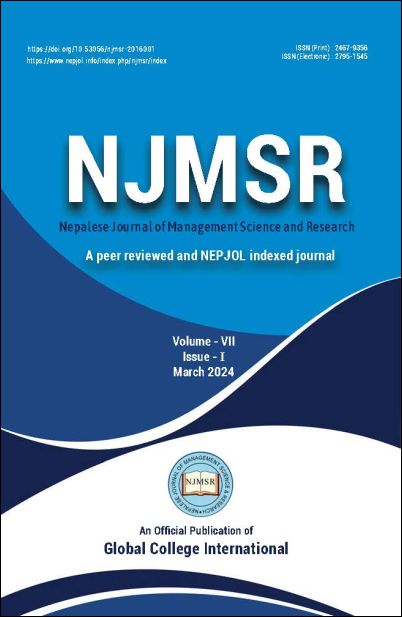The Impact of Workers’ Remittances on Household Consumption Expenditure in Nepal: A Time Series Analysis
Keywords:
Remittances, Household consumption, Time series, ARDL bounds testingAbstract
Nepal is one among South Asian countries to receive maximum amount of remittances from the countries of destinations. For last five years, it has maintained 4th position followed by India, Bangladesh, and Pakistan in terms of remittance received. As there is an increase in the inflow of remittances each year, Nepal is going to be a remittance-based economy very soon. The amount of remittance received is used for multiple purposes. However, the purpose of this study is to explore the impact of workers’ remittances on household consumption expenditure in Nepal.
Despite the increasing importance of remittances in the Nepalese economy, the relationship between remittance and household consumption has not been adequately studied yet. Thus, the prime objective of this study is to examine the effects of remittances on household consumption in Nepal. To test the research hypothesis, time series data for 22 years, 2000/01 to 2021/22 are collected from different government authentic sources such as the National Statistics Office (NSO), Quarterly Economic Bulletins of Nepal Rastra Bank (NRB), Economic Survey of various issues published by Ministry of Finance (MOF), etc. The effect of remittance on household consumption is examined by using the ARDL Bounds Testing Model. This study found a positive and significant relationship between remittances inflow and household consumption in Nepal. Thus, the Nepal government and other stakeholders should prepare and implement suitable policies to increase the inflow of remittances only from formal channels so that it solves the problem of foreign currency constraints as well as the liquidity crisis in the domestic economy.
Downloads
Downloads
Published
How to Cite
Issue
Section
License
Copyright (c) 2024 Nepalese Journal of Management Science and Research

This work is licensed under a Creative Commons Attribution-NonCommercial-NoDerivatives 4.0 International License.
This license enables reusers to copy and distribute the material in any medium or format in unadapted form only, for noncommercial purposes only, and only so long as attribution is given to the creator.

